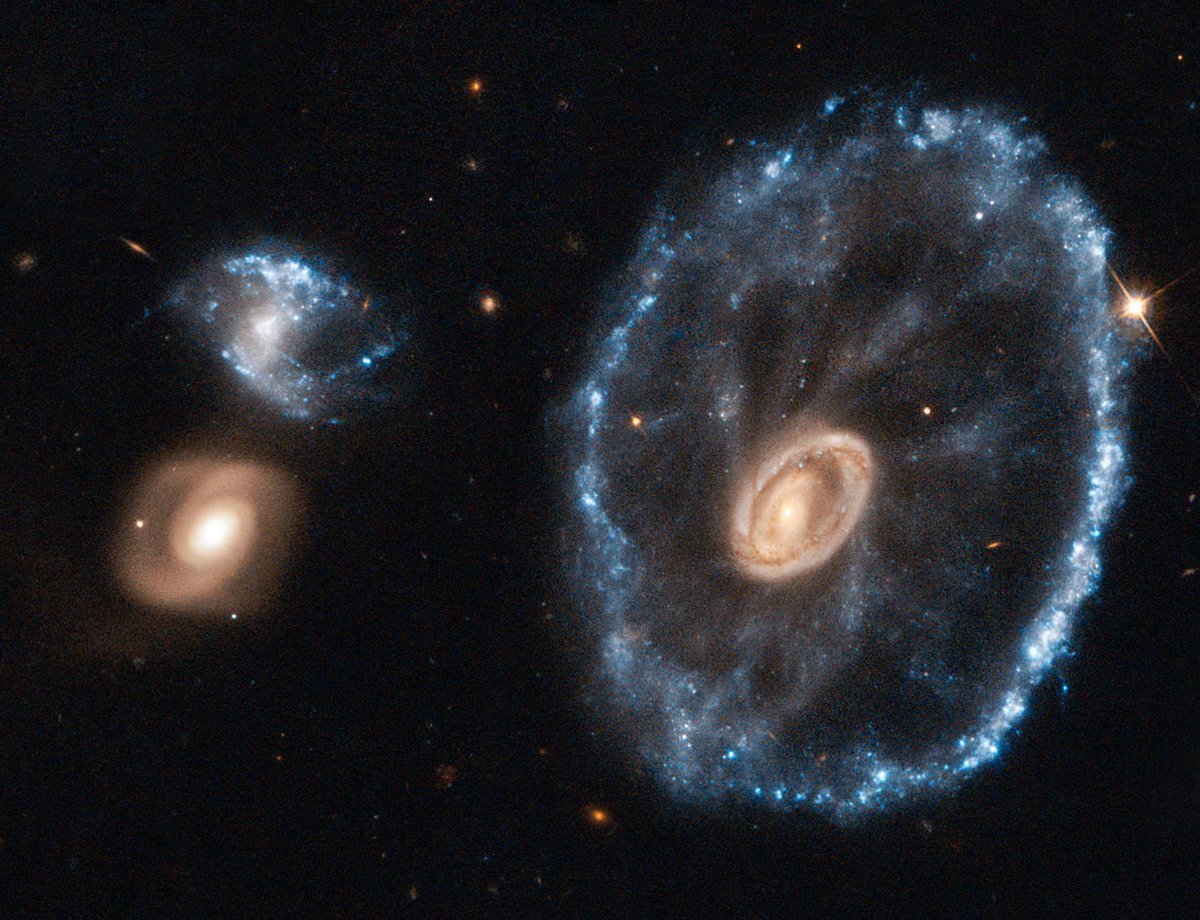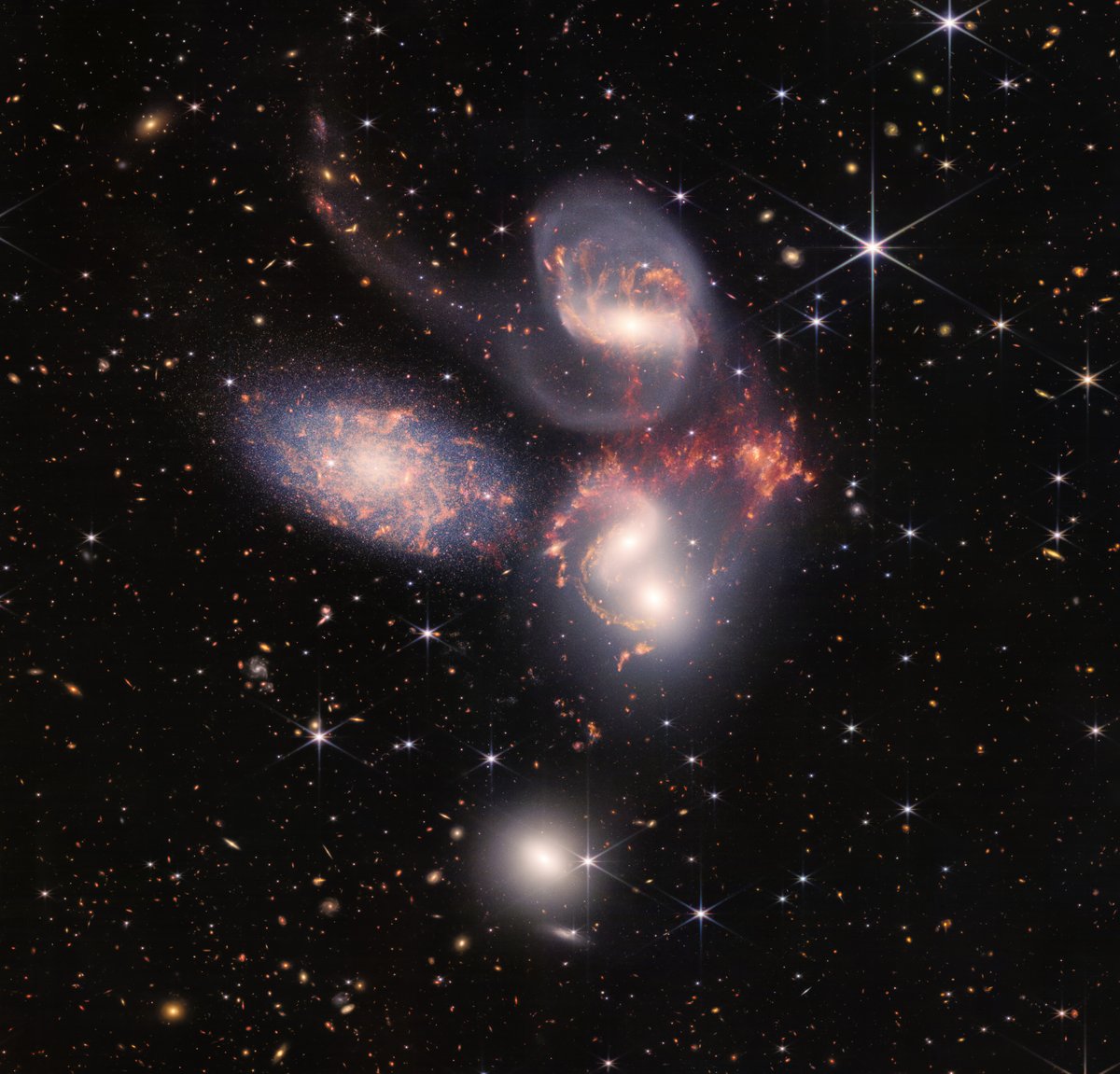
This detailed new image taken by #Webb peers into the chaos of the Cartwheel Galaxy 🛞 The image unveils secrets about star formation ✨ & the galaxy’s central black hole, providing new insights into a galaxy in the midst of a slow transformation 👇 

The Cartwheel Galaxy, located about 500 million light-years away in the Sculptor constellation, looks much like the wheel of a wagon. Its appearance results from a high-speed collision between a large spiral galaxy and a second smaller galaxy 👇
Telescopes like @HUBBLE_space have previously examined the Cartwheel, but our view of the galaxy has been obscured by gas and dust 😶🌫️ Webb, with its infrared imaging capabilities, has now uncovered new insights into the galaxy’s nature 👇 

@HUBBLE_space #NIRCam, Webb’s primary imager, has revealed more stars than observed with visible light. This is because young stars are less obscured by dust when viewed in the infrared. In this image #NIRCam data are blue, orange and yellow 👇
@HUBBLE_space The fine details in the galaxy require Webb’s #MIRI instrument, coloured red in the image. MIRI reveals regions in the Cartwheel's dust rich in hydrocarbons, chemical compounds and silicate dust. These regions, resembling spiralling spokes, form the galaxy’s skeleton 👇 

@HUBBLE_space Webb’s powerful infrared instruments have produced this detailed image of the current state of the Cartwheel, but it also provides insight into the Cartwheel’s past and how it will evolve in future. Read more at esawebb.org/news/weic2211/
📷 @NASA @esa @csa_asc & @stsci
📷 @NASA @esa @csa_asc & @stsci
• • •
Missing some Tweet in this thread? You can try to
force a refresh












